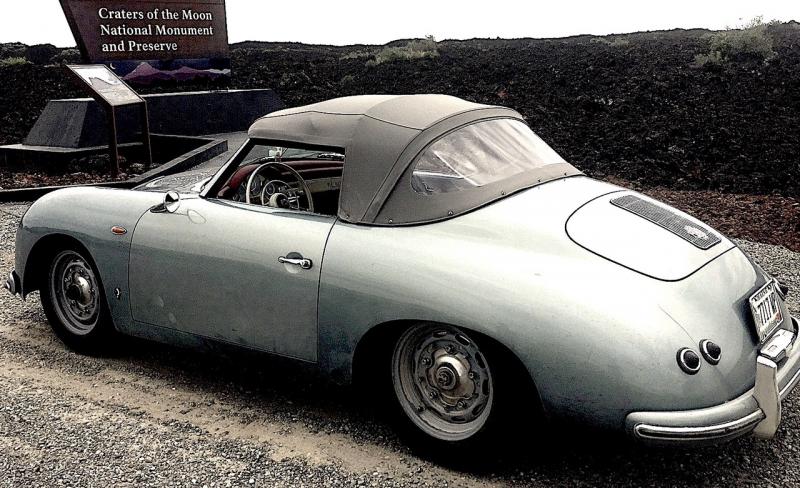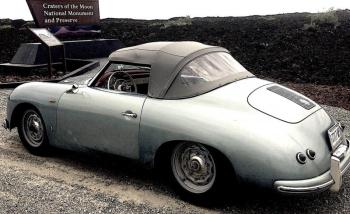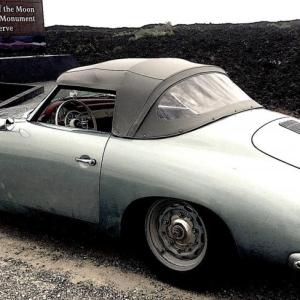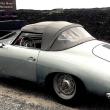Eric Green: Forgotten Fathers, Road Runs, and What is Cool
Two years ago, in 2018, I was in a movie. I thought the film would be for the memory of my dead father Marshall Green, for my need to have the world see the truth of who he had been, what he had accomplished in his life, even if he had died penniless and forgotten. The producer of the movie kept asking me the same question day after day as we crossed America: “What is the difference between just going somewhere and a ‘road run.’ ”
A serious question because I sensed that if I could verbalize what I knew, I’d have a kind of key to the entire project. Would people learn about a passion for the road from the movie? If they did not, the movie would be a waste in my opinion. I finally have what I think is the complete answer:
The going somewhere ideal is: from the moment of leaving to the moment of arrival, the person or people traveling should remain the same. Sounds so reasonable, right? The person who leaves should be the same exact person who arrives. Great cost and effort is utilized in this cause, from first class tickets to professed ultra-safe vehicles that keep any hint of the outside world they are traveling through to a minimum. Enter chain restaurants and motels and gas stations to make sure no matter where one travels, consistency of experience is guaranteed, absolute safety is almost guaranteed.
A road run or road trip is basically the opposite. The ideal is that the person leaving is changed, and would not be the same person at the end. If we really understand our universe, it becomes obvious that the only real traveling we can accomplish is within ourselves. So the road run is a form of spiritual quest, a walkabout, a drive-a-bout, a ritual performed to the god of aesthetics, which is consistently the portal to all spiritual growth. If you doubt the aesthetic part:
Imagine Peter Fonda and Dennis Hopper in buzz cuts and dull suits, driving a powder blue Prius (sounds like a cheap condom), staying at Hampton Inns, speaking in nerdy voices, doing their drug deal in Easy Rider. Frankly—not the same movie. Not quite the earth-shaker that changed the world in 1969. They might have survived, but so what! And no matter what you want to say about the movie, the core reason for its power and influence is that the choppers and actors looked and sounded COOL. They had trend-setting aesthetics!
The 1952-1959 356 Reutter Porsche is likely the most iconic design for a cool road-going vehicle. It becomes a tool willing to drive relentlessly toward the concept of FREEDOM. Thus Steve McQueen, James Dean, Paul Newman, Eddie Murphy, Marshall Green know, as cool guys, that this is the car. Hell, even freedom from the gas pump. There are other vintage cool cars, but drive one across America three times end to end, then tell me how much of a road-going tool they are. We are not talking poser cars here, cars that rich guys trailer around and stand next to on manicured lawns, telling each other how amazing they are.
Real American cool stands alone as far as I'm concerned. For me it's the true cool, the cool to aspire towards. It embraces individualism first. As Nicholas Cage said in the movie Wild at Heart, "This is a snakeskin jacket, and for me it's a symbol of my individuality and my belief in personal freedom." It was pretty cool when he said that. Of course he backed it up by knocking senseless the guy who had insulted his jacket.
Then there are the components of straightforwardness, lack of fear, honesty, fairness and generosity, the willingness to suffer without whining, the holding in of turbulent emotion because one must feel to be cool. It's never about being merely cold; a complete lack of emotion under the coolness is usually nothing but cruelty and arrogance and insensitivity. There is patience and calm no matter what the situation; each calamity is met with level-thinking and action. There's the friendliness in an open but cautious and understated way, the occasional lightheartedness, the steadfastness and unwavering faithfulness to ideals, and a careless cheerfulness in the headwind of unconquerable odds without a single thought to personal safety.
American cool is tough, but without bragging or drawing attention to itself. It always avoids a fight but usually finishes it. Of course there's the handsomeness, the tender eyes and strong jaw, unruly hair and sideburns. In the female it's a bright easy smile, optimism, languid assured walk, and again, the willingness to have ideals and not complain when these are challenged or threatened.
We are reluctant to fight, but if the cause is just, we leap, fearless.
If you're cool, you don't put on airs or condescend, you accept everyone as equal until they prove themselves otherwise. American cool must be classless colorless religionless and loyal only to beliefs that, in the purest sense, are Christian, as in the teachings and words of Jesus, concepts he stole from us pagan Celts anyway. In a bizarre way, American cool is almost constitutional in its heart. Seems it has all but vanished these days. Some of you remember and live it by example. But the majority of you? Why not join us?
Eric Green lives on the Maine coast with his wife. He was born in northern New Hampshire, rode freights across the country as a teenager, made his living as a visual artist for 30 years and wrote the award-winning syndicated column, The Penobscot Falcon. His novel LiveCell was published in 2011. His trilogy has now been published: A REPAIR MANUAL FOR NEW ENGLAND MELANCHOLIACS, LIVECELL, HOLED UP
Event Date
Address
United States


























